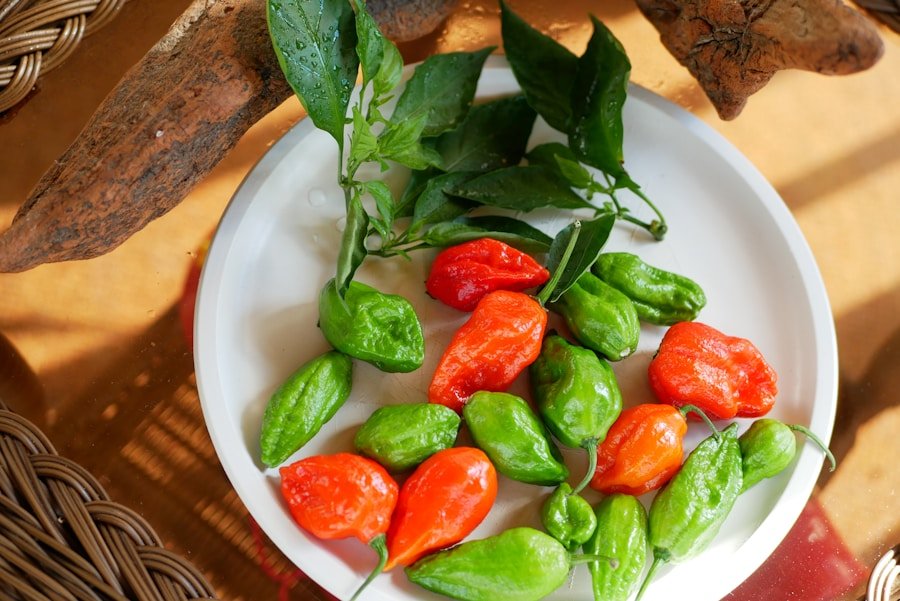The quest for effective weight management has led many individuals to explore various dietary strategies, with a particular focus on fat-burning foods.
The concept of fat-burning foods revolves around the idea that certain nutrients can stimulate the body’s metabolic processes, leading to increased energy expenditure and reduced fat storage.
This article delves into the specific categories of foods that can aid in weight loss, providing insights into how they function and how they can be incorporated into a balanced diet. Understanding the role of fat-burning foods is essential for anyone looking to optimize their weight loss journey. These foods often contain specific compounds that can influence metabolic rates, improve insulin sensitivity, and enhance the body’s ability to utilize fat as a source of energy.
By integrating these foods into daily meals, individuals can create a dietary pattern that not only supports weight loss but also promotes overall well-being. The following sections will explore various categories of fat-burning foods, detailing their benefits and offering practical suggestions for inclusion in everyday diets.
Key Takeaways
- Introduction to Fat-Burning Foods: Certain foods can help boost metabolism and aid in weight loss.
- Lean Proteins for Weight Loss: Lean proteins like chicken, turkey, and fish can help increase satiety and promote fat burning.
- High-Fiber Foods to Boost Metabolism: Foods high in fiber, such as fruits, vegetables, and whole grains, can help boost metabolism and aid in weight loss.
- Spicy Foods to Increase Thermogenesis: Spicy foods like chili peppers can increase thermogenesis and help burn more calories.
- Healthy Fats for Satiety and Energy: Healthy fats from sources like avocados, nuts, and olive oil can provide satiety and sustained energy for fat burning.
Lean Proteins for Weight Loss
Lean proteins are a cornerstone of any effective weight loss strategy.
The thermic effect of food (TEF) is a critical factor in this context; it refers to the energy required for digestion, absorption, and metabolism of nutrients.
Protein has a higher TEF compared to fats and carbohydrates, meaning that the body burns more calories processing protein-rich foods. This characteristic makes lean proteins particularly beneficial for those aiming to shed excess weight. Incorporating lean proteins into meals can also help preserve muscle mass during weight loss.
When individuals reduce caloric intake, there is a risk of losing not only fat but also muscle tissue. Consuming adequate protein helps mitigate this risk by providing the necessary building blocks for muscle repair and growth. For instance, a study published in the American Journal of Clinical Nutrition found that higher protein intake during weight loss resulted in greater preservation of lean body mass compared to lower protein diets.
This preservation is crucial because muscle tissue is metabolically active and contributes to a higher resting metabolic rate.
High-Fiber Foods to Boost Metabolism

High-fiber foods play a significant role in enhancing metabolic health and supporting weight loss efforts. Foods rich in dietary fiber, such as whole grains, fruits, vegetables, legumes, and nuts, not only promote feelings of fullness but also aid in regulating blood sugar levels. Fiber slows down the digestion and absorption of carbohydrates, leading to more stable blood sugar levels and reduced insulin spikes.
This stabilization is vital for preventing fat storage and promoting fat utilization as an energy source. Moreover, fiber-rich foods often require more chewing and take longer to digest, which can contribute to increased satiety. For example, a study published in the journal Obesity found that participants who consumed high-fiber diets reported greater feelings of fullness and were less likely to overeat compared to those on low-fiber diets.
Additionally, certain types of soluble fiber can promote the growth of beneficial gut bacteria, which has been linked to improved metabolic health and weight management. Incorporating foods like oats, chia seeds, lentils, and various fruits into daily meals can significantly enhance fiber intake and support overall health.
Spicy Foods to Increase Thermogenesis
| Spicy Food | Thermogenic Effect |
|---|---|
| Jalapeno Peppers | Increases metabolic rate by 20% |
| Cayenne Pepper | Raises body temperature and burns extra calories |
| Black Pepper | Boosts metabolism and aids in digestion |
| Ginger | Increases thermogenesis and helps in weight management |
Spicy foods have gained attention for their potential role in boosting metabolism through a process known as thermogenesis. Capsaicin, the active compound found in chili peppers, has been shown to increase energy expenditure by raising body temperature and promoting fat oxidation. This thermogenic effect can lead to a temporary increase in calorie burning after consuming spicy foods.
For instance, research published in the journal Appetite demonstrated that participants who consumed capsaicin experienced an increase in metabolic rate compared to those who did not. In addition to enhancing calorie burning, spicy foods may also help curb appetite. The heat from spices can create a sensation of fullness, leading individuals to consume fewer calories overall.
Incorporating spices like cayenne pepper, jalapeños, or even black pepper into meals can add flavor while simultaneously supporting weight loss efforts. However, it’s essential to balance spice levels with personal tolerance; excessive spiciness may lead to discomfort or digestive issues for some individuals.
Healthy Fats for Satiety and Energy
Contrary to the misconception that all fats contribute to weight gain, healthy fats play a crucial role in promoting satiety and providing sustained energy. Foods rich in monounsaturated and polyunsaturated fats—such as avocados, nuts, seeds, olive oil, and fatty fish—can help individuals feel satisfied after meals while also delivering essential nutrients. These healthy fats are not only beneficial for weight management but also support heart health and reduce inflammation.
Including healthy fats in the diet can enhance the absorption of fat-soluble vitamins (A, D, E, and K), which are vital for various bodily functions. For example, avocados are an excellent source of monounsaturated fats and provide fiber along with vitamins C, E, K, and B6. A study published in the journal Nutrition & Metabolism found that participants who included healthy fats in their diets reported greater satisfaction and were less likely to snack between meals compared to those on low-fat diets.
This satiety factor is essential for maintaining a calorie deficit without feeling deprived.
Green Tea and Other Metabolism-Boosting Beverages

Beverages such as green tea have garnered attention for their potential metabolism-boosting properties. Green tea contains catechins—particularly epigallocatechin gallate (EGCG)—which have been shown to enhance fat oxidation and increase energy expenditure. Research indicates that regular consumption of green tea may lead to modest reductions in body weight and body fat percentage over time.
A meta-analysis published in the International Journal of Obesity concluded that green tea consumption is associated with significant reductions in body weight and waist circumference. In addition to green tea, other beverages like black coffee and yerba mate also offer metabolism-boosting benefits. Caffeine is a common ingredient in these drinks that can stimulate thermogenesis and enhance physical performance by increasing adrenaline levels in the body.
However, it’s important to consume these beverages mindfully; excessive caffeine intake can lead to negative side effects such as anxiety or sleep disturbances. Incorporating moderate amounts of green tea or coffee into daily routines can provide both hydration and metabolic benefits.
Berries and Other Low-Sugar Fruits for Weight Loss
Fruits are often considered an essential component of a healthy diet; however, not all fruits are created equal when it comes to weight loss. Berries—such as strawberries, blueberries, raspberries, and blackberries—are particularly noteworthy due to their low sugar content and high fiber levels. These fruits are rich in antioxidants and phytochemicals that can support metabolic health while providing essential vitamins and minerals.
The high fiber content in berries contributes to feelings of fullness while minimizing calorie intake. Incorporating berries into meals or snacks can be an effective strategy for those looking to manage their weight without sacrificing flavor or nutrition. For example, adding berries to yogurt or oatmeal not only enhances taste but also boosts fiber intake significantly.
Additionally, berries have a low glycemic index (GI), meaning they have a minimal impact on blood sugar levels compared to higher-sugar fruits like bananas or grapes. This characteristic makes them an excellent choice for individuals aiming to control their appetite and maintain stable energy levels throughout the day.
Conclusion and Tips for Incorporating Fat-Burning Foods into Your Diet
Incorporating fat-burning foods into your diet doesn’t have to be complicated or overwhelming; it can be an enjoyable journey toward better health and weight management. Start by gradually introducing lean proteins into your meals—consider grilled chicken salads or fish tacos as delicious options that provide both protein and flavor. Next, focus on adding high-fiber foods like whole grains or legumes; swapping white rice for quinoa or adding beans to soups can significantly boost fiber intake.
Experimenting with spices is another effective way to enhance meals while reaping thermogenic benefits; try adding cayenne pepper to stir-fries or incorporating fresh herbs into sauces for added flavor without extra calories. Don’t forget about healthy fats—avocado toast topped with seeds or nuts makes for a satisfying breakfast option that keeps you full longer. Finally, make hydration enjoyable by sipping on green tea or infusing water with berries for a refreshing twist.
By embracing these fat-burning foods and making small adjustments to your diet over time, you can create a sustainable eating pattern that supports your weight loss goals while promoting overall health.
If you are looking for foods that can aid in the fat-burning process, you may also be interested in learning about the weight loss drug Ozempic. According to a recent article on Weight Loss Haven, Ozempic is a drug developed by Novo Nordisk that has been shown to help with weight loss among its many uses. To read more about this innovative drug and its potential benefits, check out the article here.
FAQs
What are some foods that aid in the fat burning process?
Some foods that aid in the fat burning process include green tea, chili peppers, whole grains, lean proteins, and fruits such as berries and apples.
How do these foods help in burning fat?
These foods help in burning fat by boosting metabolism, increasing the body’s ability to burn calories, and promoting the feeling of fullness, which can lead to reduced calorie intake.
Are there any specific nutrients in these foods that contribute to fat burning?
Yes, some of these foods contain specific nutrients such as caffeine and catechins in green tea, capsaicin in chili peppers, and fiber in whole grains and fruits, which have been shown to aid in the fat burning process.
Can these foods be part of a balanced diet?
Yes, these foods can be part of a balanced diet when consumed in moderation and as part of a varied and nutrient-rich meal plan.
Are there any potential side effects of consuming these fat-burning foods?
While these foods are generally safe for consumption, some people may experience digestive discomfort or sensitivity to certain compounds found in these foods. It’s important to consume them in moderation and consult with a healthcare professional if you have any concerns.